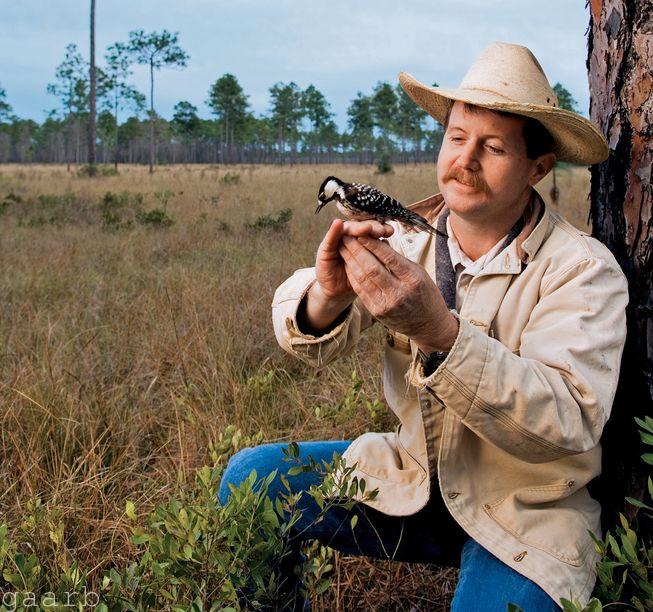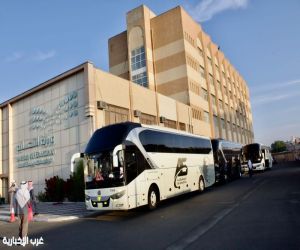
المصدر - Southern Company’s Power of Flight program was created in 2003, and 10 grants were awarded in that initial year to support projects in the Southeast. The program’s goal is to conserve birds that are characteristic of the southern U.S. through strategic habitat restoration, species management and community engagement.
Starting in 2015, the Power of Flight funds are now directed through National Fish and Wildlife Foundation (NFWF) conservation initiatives that overlap the Southern Company service area: Longleaf Stewardship Fund, Gulf Coast Conservation Grants Program and Atlantic Flyway Shorebirds Initiative. This evolution maximizes the conservation impact for target species, while helping better leverage federal and other private resources.
One keystone species supported by Power of Flight projects since 2003 is the endangered red-cockaded woodpecker (RCW).
We spoke with Joel Casto, a wildlife biologist and forester who’s been working with RCWs for 12 years. Casto is based in the Apalachicola National Forest (ANF) home of the largest population of RCWs anywhere.
Casto is tasked with translocating RCWs from the ANF, a “recovered” population, to smaller, struggling populations, aiming to increase their size and help them become self-sustaining.
What is the red-cockaded woodpecker?
The RCW is a small black and white woodpecker, about the size of a cardinal. The male has two little red patches of feathers on each side of his head, which is how the bird gets its name.
RCWs are found throughout the Southeast, from east Texas to Florida and north to Virginia in the remaining fragments of mature and old-growth southern pine forests of private, state and federal lands.
The preferred habitat of RCWs is frequently burned, mature longleaf pine forests, with little-to-no hardwood midstory and well-developed ground cover. Ideally the forest floor is open and has a diverse, understory plant community. The RCW is the only woodpecker that excavates its cavity in a live pine tree, and they need those old-growth pines (80-plus years old) to make that possible.
Why is its population in decline?
The RCW population’s historic decline, ending in the early 1990s, was due to the loss of mature longleaf pine forests. The Southeast once had about 90 million acres of longleaf forest, but at the turn of the century much of that was cut down with only about 4 million acres remaining today.
What efforts are currently being done to conserve the RCW?
Each spring I band the nestlings of about 110 RCW nests, normally about 200 chicks. Each bird is banded with three colored bands on one leg and a U.S. Geological Survey silver band and one colored band on the other leg. Each bird is uniquely marked, so no other bird population in this forest has the same combination of colors. This is the beginning process of the translocation.
How do you actually move the birds?
In September, I start determining which cavity the juvenile birds I’ve targeted to move are roosting in at night.
Normally on capture night we move three to five unrelated juvenile pairs of RCWs. Since we’ve already established where these birds are roosting, we wait until dusk. Once they go into their cavity, we use a net on a telescopic pole to get the birds out of the tree.
How successful has the translocation been?
Translocations have proven to be a very successful tool for making major progress in saving and restoring small populations—we have populations that were down to one bird. By translocating birds into struggling populations we can grow these populations to 30 potential breeding groups within a matter of years. Once they reach 30 groups, they are able to grow on their own.
With these grants, we have been able to save three declining populations and reintroduce three new populations. About 50 percent of birds moved remain in their new population and 36 percent become breeders. The total increase has had an impact on 21 recipient populations from 2004-2014. In 2004, those 21 populations had a total of 219 potential breeding groups. In 2014, they had717 breeding groups, a 188-percent increase.
Also, 12 of 17 of our recipient populations have met or exceeded their 2014 population goals. On average, we have decreased the time to achieve their individual recovery goals by 18 years. That’s an important conservation accomplishment.
Of the 41 recipient populations in the Southern Range Translocation Cooperative, 17 of those have received birds translocated through these grants, and 12 of those are now off-line, meaning they have reached 30 potential breeding groups or their designated recovery goal if less than 30.
What does the Power of Flight program mean to your work?
Power of Flight has been instrumental. Along with the longleaf restoration work supported by Southern Company, Power of Flight has moved the RCW recovery process forward, making it possible to see the light at the end of the tunnel, and to be able to potentially down-list (from “endangered” to “threatened”) the RCW in the near future. Also, our program has become a great model for other groups interested in species recovery. We’ve given them a plan of action and a blueprint in hopes they can see some of the same successes we’ve seen. I want to praise Southern Company and Leslie Cox, the stewardship manager. They make this grant and many others possible, and their leadership in restoration of the RCW population through the Power of Flight program has been amazing.










